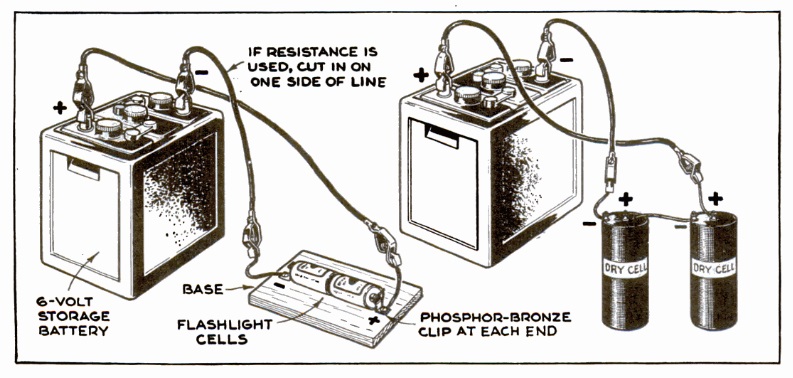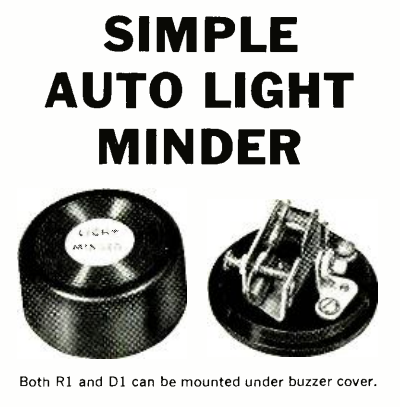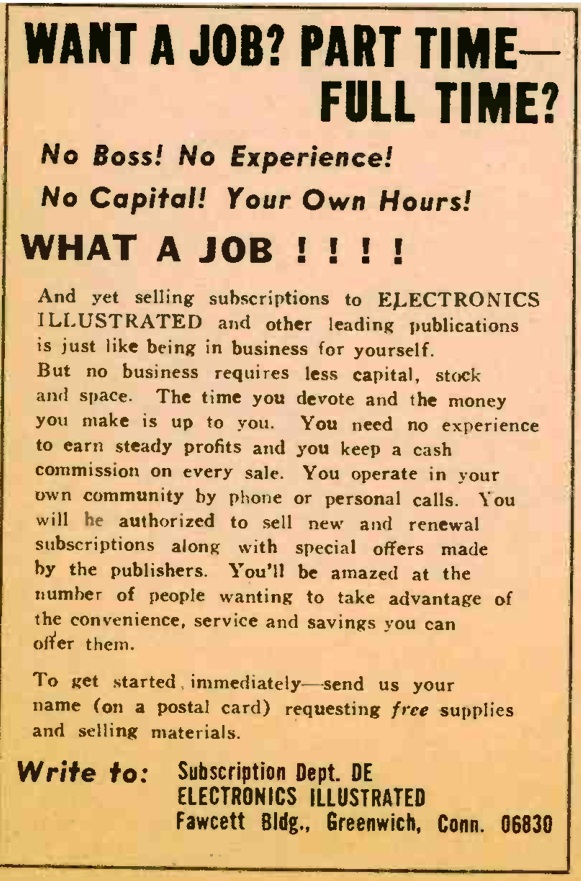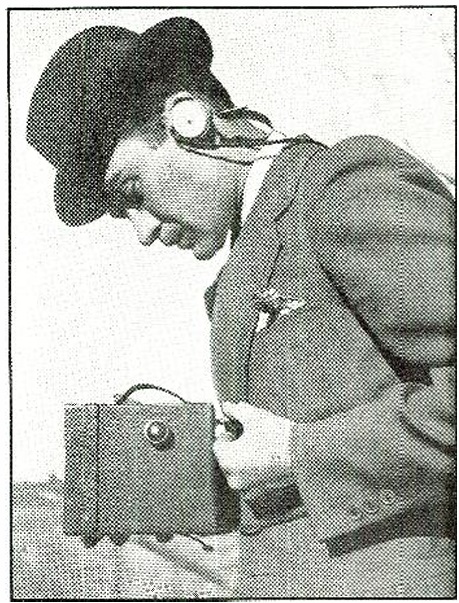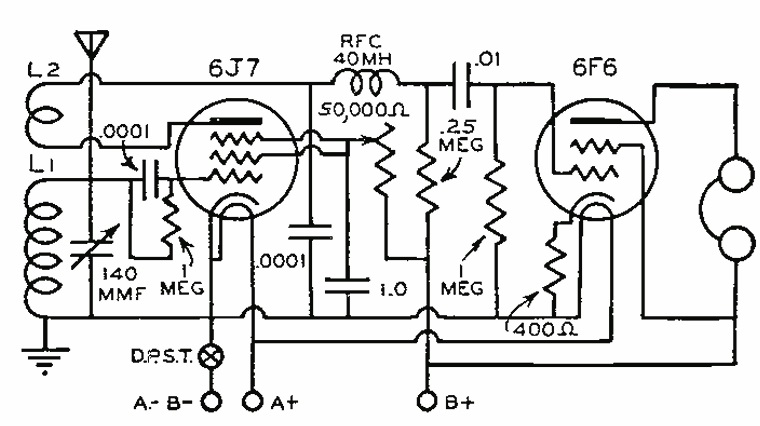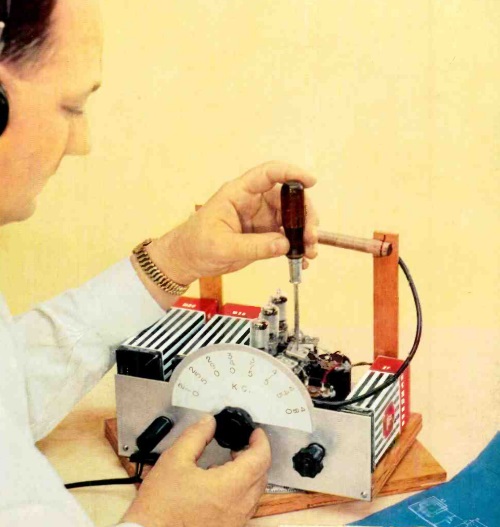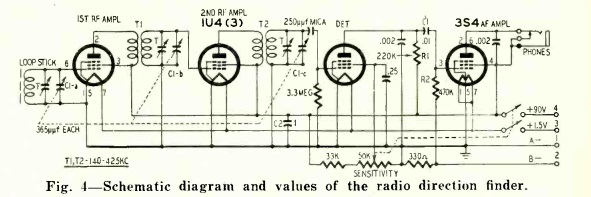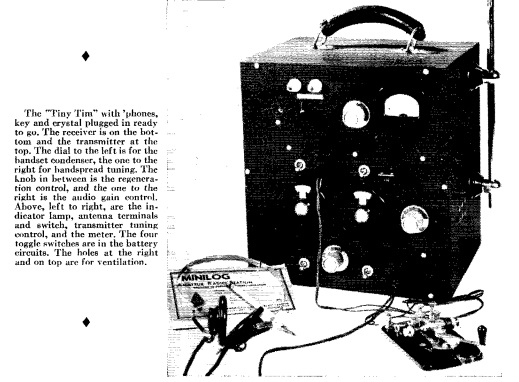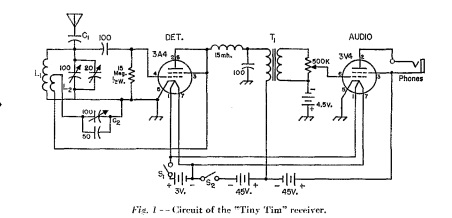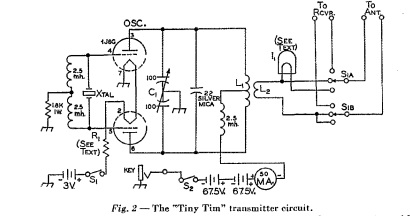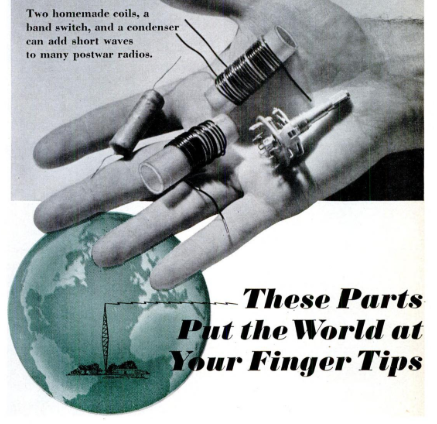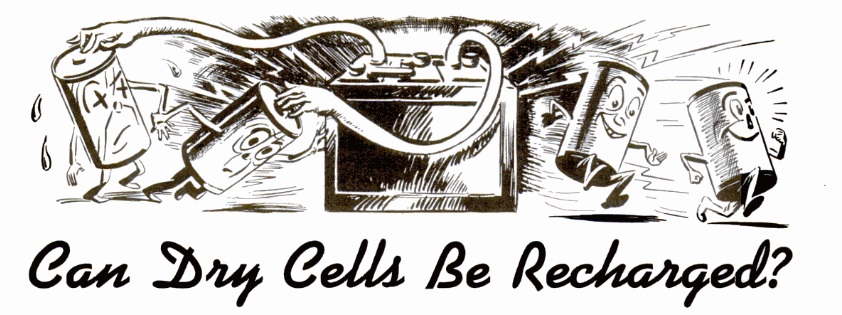 Flashlight batteries were sometimes in short supply during the war, and the May 1945 issue of Popular Science gave some pointers on how you could get some extra life out of them by recharging them. If the battery was already dead, there was little hope, and if they were bulging or pitted, they were beyond hope. But by recharging them before they were completely dead, you could give a low battery a new lease on life.
Flashlight batteries were sometimes in short supply during the war, and the May 1945 issue of Popular Science gave some pointers on how you could get some extra life out of them by recharging them. If the battery was already dead, there was little hope, and if they were bulging or pitted, they were beyond hope. But by recharging them before they were completely dead, you could give a low battery a new lease on life.
The idea was to zap them with about twice their voltage. So for a flashlight battery, you could put two in series, and then charge them with a six-volt battery from the car. You would wire them as shown below, but then carefully monitor them. After two to five minutes, they would start to get warm, at which point you would disconnect them and let them cool. This process would be repeated two or three time. It was important not to allow them to become hot. When done, the cells could be put back in use. They wouldn’t last as long as new batteries, but new batteries might not be available.

